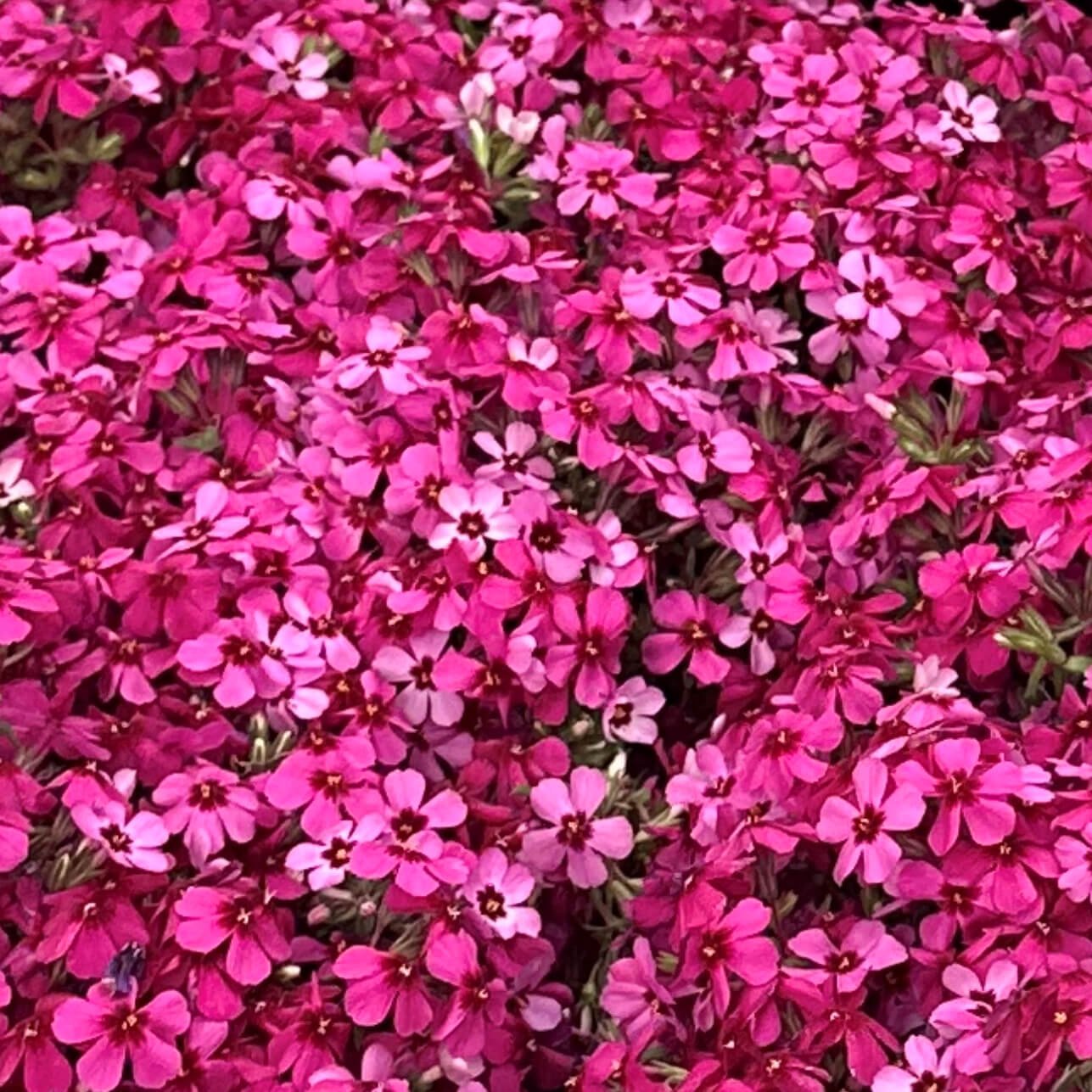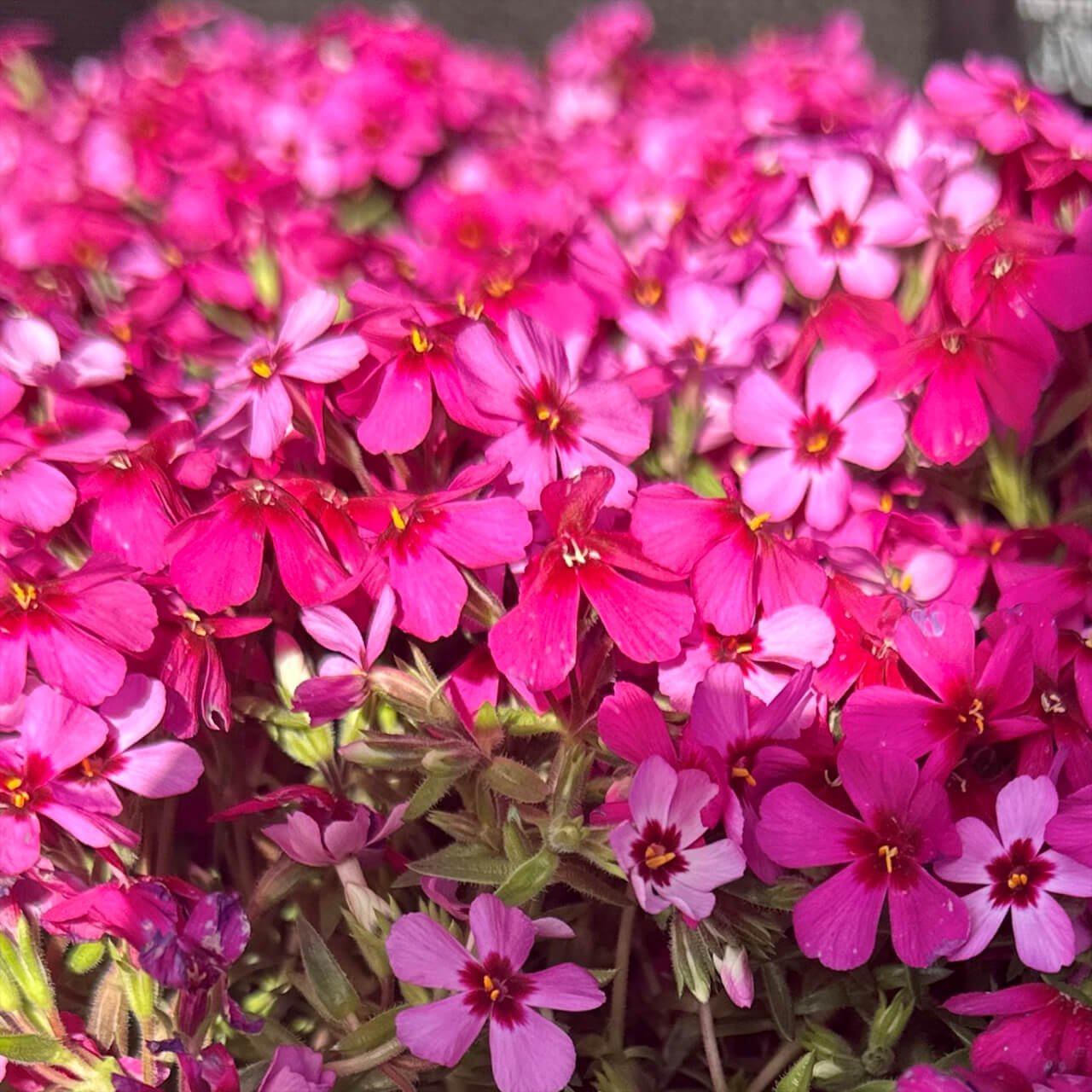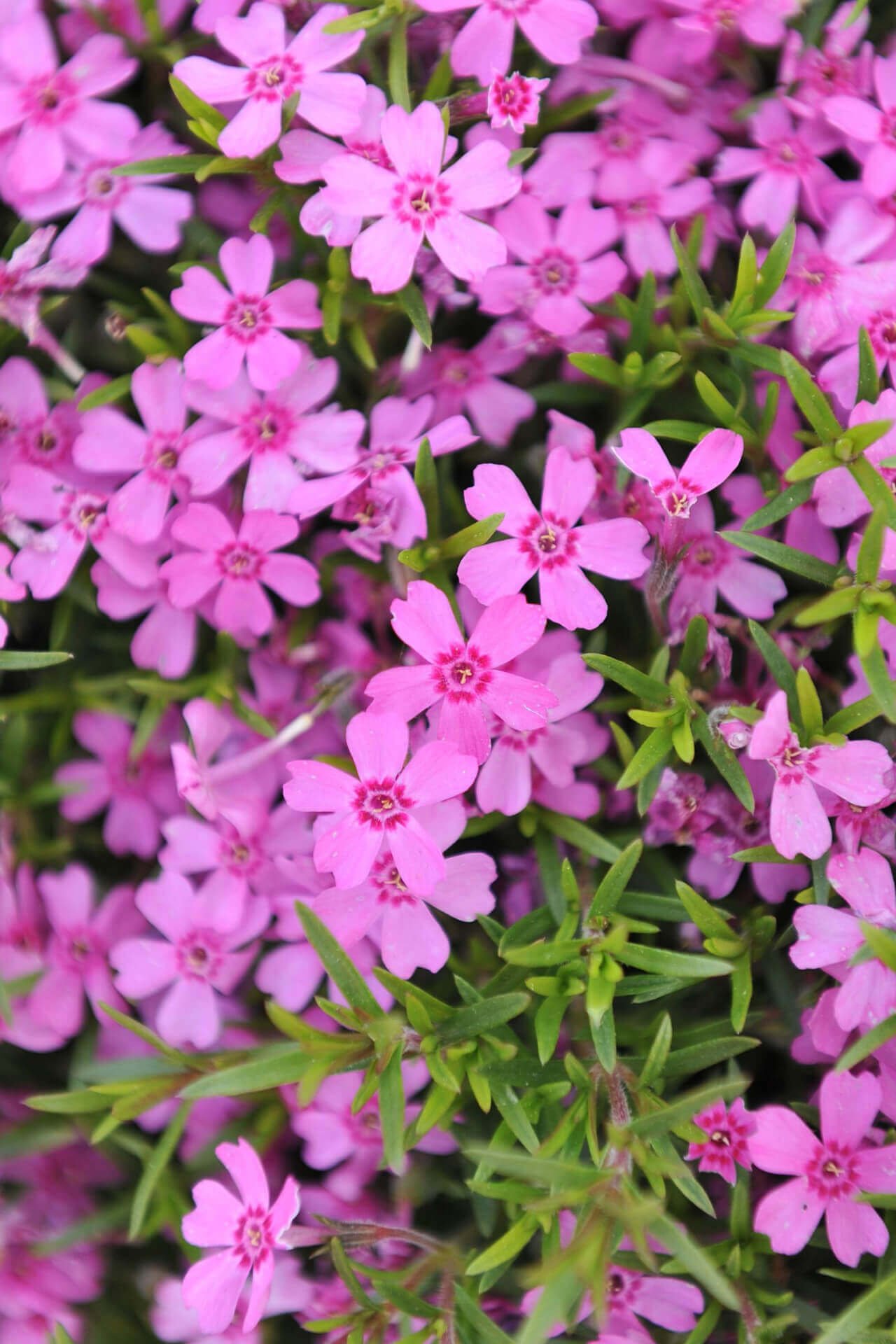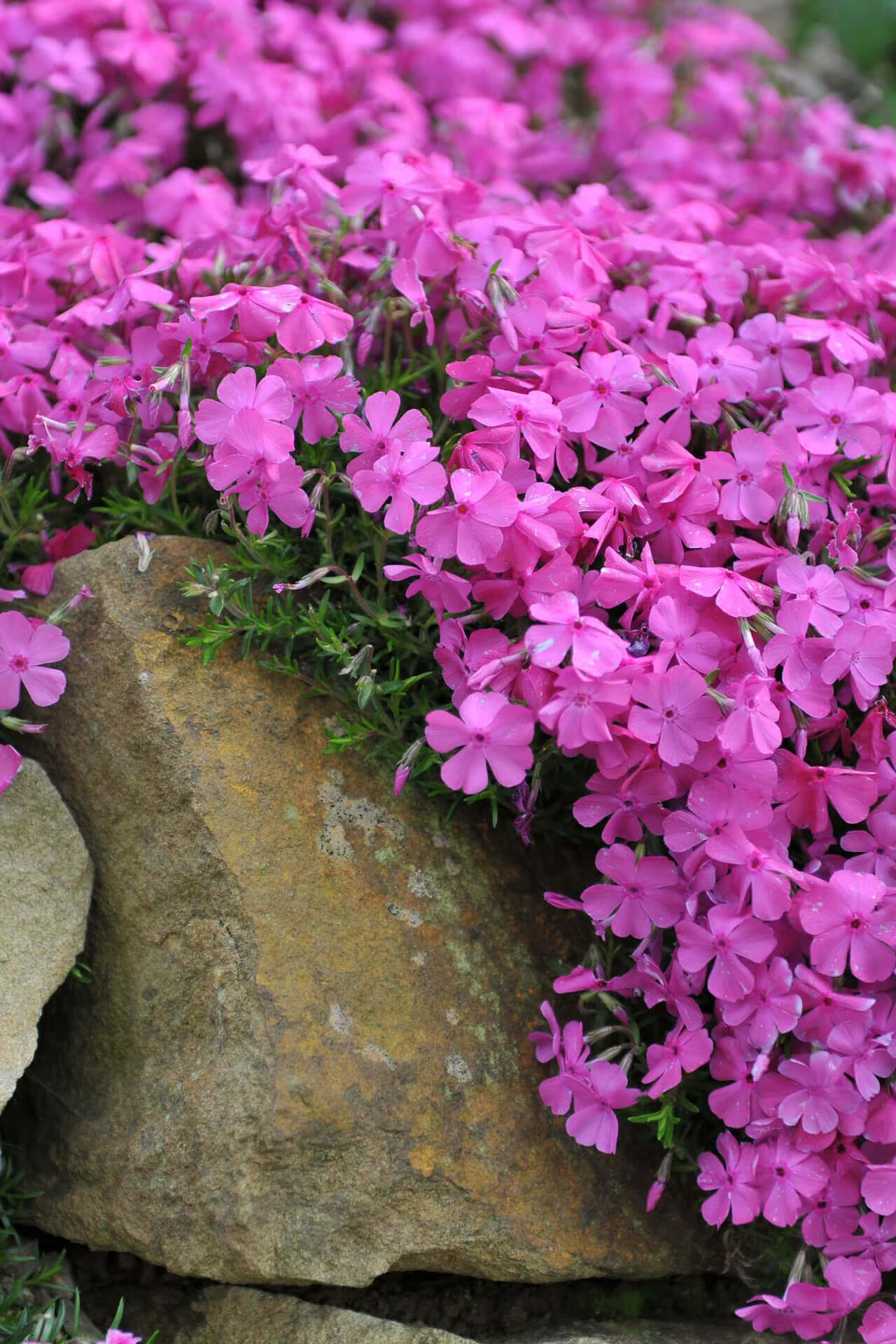





Creeping Phlox
Creates colorful, dense floral mats
Vibrant ground cover in spring
Deer and drought resistant plant
Thrives in
ZONE 4ZONE 5ZONE 6ZONE 7ZONE 8This plant ships:
May 251 Year Guarantee on all plants
Creeping Phlox Phlox stolonifera
Creeping Phlox (Phlox stolonifera) is a superb native groundcover choice for areas that need a touch of beauty. Soft pink flowers complement softer, moss like green foliage.
Plant Details - Creeping Phlox
Family: Polemoniaceae
Light Requirement: Full Sun
Water Needs: Moist
Height: 6 in.
Spread: 1 – 3 ft.
Growth Rate: Fast
Bloom Time: Spring
Flower Color: Pink
Wildlife Value: Attracts bees and butterflies
Landscape Use and Maintenance – Creeping Phlox
Creeping Phlox has soft foliage that makes a lovely, dense mat of green, with soft pink, five petaled flowers. This plant blooms in spring. This is a low growing, perennial plant with leaves that are evergreen.
A lovely choice for your border edges, cottage garden, woodland inspired garden, rock garden, or as a spiller in containers. Beautiful when nestled and draping across rock walls and ledges, especially at eye level.
Due to its low proximity to the ground, it will limit growth of weeds. Thrives in full sun. Give it plenty of sunlight to encourage consistent flowering and spreading of this plant in your garden.
This is a low maintenance plant perfect for the busy gardener. Plant in well draining soil. Tolerates a variety of different soil but performs best in dry or sandy soils. Avoid planting in heavy clay soil that will hold more water.
This plant is attractive to different pollinators, like bees and butterflies. The flowers are always full of nectar and will attract Skippers and moths.
Water regularly until this plant is established in your garden. Once established this plant is drought tolerant. Let Mother Nature do the watering for you! This plant can sometimes be susceptible to root rot in overly wet conditions, so let it dry out between waterings.
Easily propagate this plant by lifting, dividing and replanting.
It is both a deer and rabbit resistant plant.
Noteworthy Characteristics
Creeping Phlox is tolerant to being stepped on. It makes a great choice for planting on high traffic areas like steps or in between pavers on your garden path.
Use as an alternative to grass in your yard: this plant does not need to be pruned or mowed down.
This Is How Your Plants Will Look upon Delivery

Bloom Season
Spring
Bloom/Foliage Color
Pink
Height at Maturity
Under 12"
Care
Creeping phlox thrives in full sun with well-drained soil. Water regularly during establishment, then reduce. Lightly prune after blooming to maintain shape and encourage reblooming. Use a balanced fertilizer in early spring, and protect in harsh winters with mulch.
Plant Reproduction
Creeping Phlox spreads by sending out leafy stems, called stolons, above ground.
Shipping date depends on the date displayed and chosen when you order from the product's page.
We only accept returns on plants verified dead. If you think your plants have died, we offer a 1 year warranty, please use this File a Claim Link to verify dead plants and start with return warranty process.








Colorful Ground Cover:
Creeping Phlox provides a stunning carpet of colorful blooms, adding vibrant hues of pink, purple, white, and blue to your garden. Its dense foliage helps suppress weeds and creates a lush, visually appealing ground cover.
Long Blooming Season:
Enjoy a prolonged burst of color in your garden with Creeping Phlox's extended blooming period. From spring to early summer, it continuously produces eye-catching flowers that brighten up any landscape.
Effective Erosion Control:
Its dense growth helps stabilize soil on slopes and embankments, making Creeping Phlox a practical choice for preventing erosion while adding a touch of beauty to bare patches.
Flexible Landscaping Option:
Whether used in rock gardens, hanging baskets, containers, or as a border plant, Creeping Phlox adapts beautifully to various landscaping needs, providing long-lasting blooms and versatility.
Caring Tips
How do I care for my Creeping Phlox?
Each box contains detailed care instructions and information about your product. But here's the basics.
Care Tips
Creeping phlox thrives in full sun with well-drained soil. Water regularly during establishment, then reduce. Lightly prune after blooming to maintain shape and encourage reblooming. Use a balanced fertilizer in early spring, and protect in harsh winters with mulch.
Light Requirements
Creeping phlox thrives in full sun, requiring about 6 hours of sunlight daily for ultimate blooming. It can also tolerate partial shade, full sun ensures vibrant flowers and healthy growth. Some afternoon shade can help in hotter climates.
Hardy Planting Zones
4 • 5 • 6 • 7 • 8
Header
Use this content to share information about your store and products.
Frequently Asked Questions
How often should I water my plants?
How do I know if my plant is getting too much or too little sunlight?
What should I do to prepare my plants for winter?
What are the signs that my plant needs fertilizing?
How can I prevent pests from damaging my plants?
How do I choose the right plant for my climate zone?






